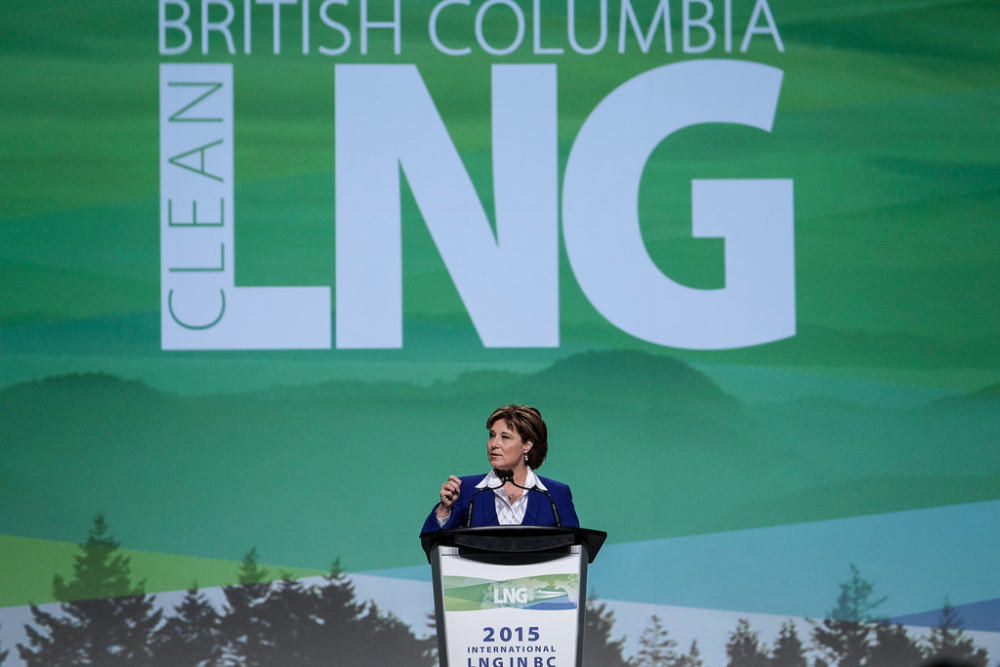Expectations are understandably high that world leaders will come together at the upcoming United Nations climate-change conference in Paris to strike a deal to stave off catastrophic global warming. Closer to home, expectations are also building that all levels of government will commit to strong climate action.
Earlier this week, Alberta’s government did the previously unimaginable and announced a robust and comprehensive climate plan. But, here in British Columbia, will the government do its part to keep global temperature rise below two degrees Celsius?
The answer will become clear soon enough. In December, the provincial government is expected to release the draft of its Climate Leadership Plan. When it’s finalized, the new plan will build on the 2008 Climate Action Plan, which included successful first steps such as B.C.’s carbon tax, low carbon fuel standard and clean-electricity requirements.
Indeed, the stakes have never been higher. In fact, the first 10 months of 2015 were the hottest of any January–October period in the 136-year history of global-temperature record keeping — at 0.86 C above the 20th-century average. It’s worth noting that the previous record was set in 2014. Indeed, British Columbians won’t soon forget the record heat, drought, and wildfires of the past summer.
That’s why it’s important that companies, organizations and cities — including the B.C. Government and Service Employees’ Union, Canadian Wind Energy Association, City of Vancouver, Clean Energy Canada, Pembina Institute, and Urban Development Institute Pacific Region — are uniting to call on the province to seize the opportunity to bring forward bold new measures to address human-caused climate change.
With more than 145 signatories, the Call for Action on Energy and Climate, released this week, states:
We support the B.C. government’s commitment to implement a new Climate Plan.
We expect the plan will include ambitious new actions that lead to:
- A strong economy, with opportunities for all British Columbians;
- A province powered by clean energy;
- A more equitable society;
- Cleaner air and water, supporting healthy communities and nature; and
- Protection from a changing climate.
We can’t afford to delay. Now is the time to lead the transition to a clean energy economy.
In addition, over 75 companies, organizations and cities have endorsed the Call for Action on Energy and Climate in the Building Sector, a more detailed statement urging the province to take action to reduce carbon emissions from homes and buildings. The Royal Architectural Institute of Canada, Urban Development Institute Pacific Region, Pembina Institute, and other signatories want to see the government set clear targets for the energy performance of new buildings.
These latest calls for action are indicative of a groundswell of support for effective and innovative measures to reduce greenhouse-gas emissions. On November 20, over 25 academics from B.C. universities sent an open letter to Premier Christy Clark, asking her to bring forth “meaningful policy to reduce carbon pollution in a manner compatible with a global carbon budget”. Recently, Foreign Affairs Minister Stéphane Dion said that the provinces would have to demonstrate success in cutting emissions in order to receive green-infrastructure dollars from the federal government.
In response to B.C.’s Climate Leadership Plan discussion paper, the Pembina Institute called on the province to immediately increase the carbon tax — currently frozen until 2018 — by $5 to $10 per year over the next decade. We also urged the government to broaden the scope of the carbon tax to include vented methane and carbon dioxide from the natural-gas sector and industrial-process emissions from the cement, aluminum and lime sectors.
“The province’s current policies fall short of our commitments; ambitious new policies will be needed to change that projection,” our submission states. “With extreme weather events like droughts, wildfire and heat becoming the new normal, people are concerned about the future and receptive to solutions. Now is the time is for B.C. to regain its role as an international leader on climate policy.”
B.C.’s greenhouse-gas emissions totalled 64 million tonnes of carbon dioxide equivalent in 2013, according to the government. But it’s clear that B.C. can reduce its emissions, help stabilize the climate, and thrive in a lower-carbon world. The Ecofiscal Commission’s report on carbon pricing and economic competitiveness, released on November 18, is the latest piece of research to back this up. As well, a Clean Energy Canada analysis makes the case that B.C. can meet its 2050 emissions targets and, at the same time, see economic growth and hundreds of thousands of new jobs.
In the introduction of his latest book on climate change, Australian scientist Tim Flannery recalls that former premier Gordon Campbell told him that he brought in B.C.’s carbon tax after reading Flannery’s 2005 book, The Weather Makers.
“Climate science advances by leaps and bounds, but in some countries politics lags far behind,” Flannery writes in the sixth chapter of Atmosphere of Hope. “Even in nations that lead in climate action, few politicians understand how dangerously and swiftly the burning of fossil fuels is altering our planet. Collectively, politicians are failing to act to maximise the chance of an acceptable outcome.”
Let’s hope that Premier Clark and her government heed the warnings of scientists and the calls of B.C. companies, organizations and cities. As the academics stated in their open letter to the premier, it’s time the province put forward “credible” policies to ensure the province meets its emissions targets. And it starts with a strong draft Climate Leadership Plan.
This article appeared in Policy Options on November 27, 2015.









